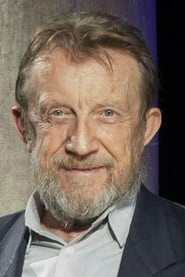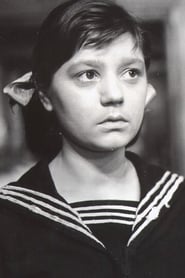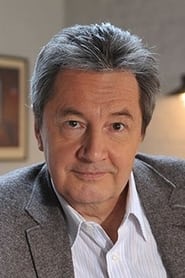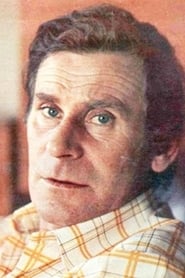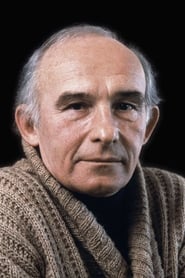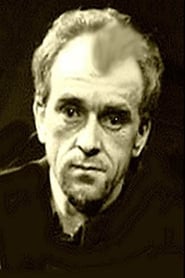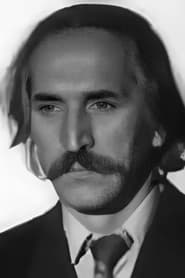
Ask Your Own Question
What is the plot?
In the shadowed borderlands of the early 17th century, the world of Hanusz Bystry unfolds amid the relentless turbulence of Tatar raids and Cossack warfare. The film opens with a harrowing scene: the Bystry family inn, a sturdy bastion of their livelihood and a symbol of their roots, is engulfed in flames and ruin as Tatar raiders descend with ruthless fury. The crackling fire and the screams of villagers fill the night air, a vivid tableau of destruction that shatters the fragile peace of the region. Hanusz, a young man played by Lubomir Cvetkov, stands amidst the chaos, his face etched with shock and sorrow, witnessing the annihilation of his home and the scattering of his family. His father, Marek Bystry (Edward Linde-Lubaszenko), the innkeeper and patriarch, is shown desperately trying to protect what remains, but the overwhelming violence leaves no refuge. This brutal opening scene sets the tone of peril and loss that permeates the narrative.
As dawn breaks over the smoldering ruins, Hanusz's resolve hardens. The destruction of the inn is not just a personal tragedy but a symbol of the wider conflict ravaging the borderlands. With his family displaced and their future uncertain, Hanusz embarks on a perilous journey to Tarnów, a nearby town that serves as a political and military hub. The landscape between the ruined inn and Tarnów is harsh and unforgiving, dotted with signs of ongoing strife--burned-out villages, wary peasants, and armed patrols. Tarnów itself is a bustling, tense place, alive with the murmur of alliances and betrayals. Here, Hanusz encounters Semen Bedryszko (Zbigniew Borek), a fierce and loyal Cossack warrior whose rugged presence and piercing gaze embody the spirit of freedom and resistance. Semen, along with his partner Midopak (Wiesław Gołas), becomes a steadfast ally to Hanusz, guiding him through the labyrinth of political intrigue and military skirmishes.
The tension escalates as Hanusz navigates the treacherous factions vying for power. Among his adversaries are Kajdasz (Franciszek Trzeciak), a calculating political figure whose ambitions threaten to engulf the region in further bloodshed, and Kara Mordach (Djoko Rosić), a mysterious and formidable rival whose loyalties are as shifting as the winds. The film masterfully depicts their confrontations, blending tense dialogue with vivid visual storytelling. In one charged encounter, Kajdasz confronts Hanusz with a cold, menacing tone: "You think you can change the fate of these lands? You are but a boy playing at war." Hanusz's retort, firm and unwavering, "Then I will learn what it means to be a man of these lands," crystallizes his transformation from a victim of circumstance to a determined agent of change.
Amidst this turmoil, Father Benignus (Andrzej Kozak) emerges as a moral compass, his presence a reminder of faith and the human cost of conflict. His quiet counsel to Hanusz, "In darkness, even the smallest light can guide a soul," resonates throughout the unfolding drama, underscoring the film's themes of hope and resilience.
The narrative deepens with revelations about the characters' pasts and the region's tangled history. Hanusz learns of Semen's unwavering loyalty to the Cossack cause and the sacrifices it demands. Kara Mordach's enigmatic background is unveiled, revealing a man shaped by betrayal and driven by a personal vendetta. The film's title, Oko proroka (Eye of the Prophet), hints at a mystical dimension--prophecies and visions that foreshadow the fate of the characters and the land. Though specifics of these visions are subtle, they imbue the story with a sense of destiny and inevitability.
Violence punctuates the narrative with stark finality. The initial Tatar raid that razes the Bystry inn implies the deaths of family members and villagers, though the film focuses on Hanusz's survival and loss rather than enumerating victims. Later, skirmishes between Cossacks and their enemies result in further casualties. In one brutal clash, Semen Bedryszko kills a Mongol invader, a moment captured with visceral intensity--the clash of steel, the spray of blood, and Semen's grim expression conveying the harsh reality of survival. Midopak, Semen's partner, also falls in battle, his death a poignant blow that hardens Semen's resolve.
The climax converges in a decisive confrontation where Hanusz, Semen, and their allies face off against Kajdasz and Kara Mordach's forces. The battle is a chaotic storm of clashing swords, thunderous gunfire, and desperate cries. Hanusz confronts Kajdasz directly, their duel a microcosm of the larger conflict. Kajdasz sneers, "Your dreams are folly, boy. Power belongs to those who seize it, not those who wait for it." Hanusz, bloodied but unbowed, counters, "Then I will seize it--not for myself, but for those who cannot." The duel ends with Kajdasz's death at Hanusz's hand, a turning point that shifts the balance of power.
Kara Mordach, wounded and cornered, reveals a final twist--his actions were driven by a cursed prophecy that doomed him to betray those he once loved. In a moment of tragic clarity, he implores Hanusz, "Break the curse that binds us all, or we are doomed to repeat this cycle of blood." Hanusz's response is resolute: "Then I will be the eye that sees beyond the curse."
The film's closing scenes are somber yet hopeful. Hanusz returns to the ruins of the Bystry inn, now a symbol not only of loss but of endurance. The camera lingers on his face, marked by grief but illuminated by determination. The prophetic motif of the eye is evoked visually--a lingering shot of Hanusz's steady gaze, reflecting the dawn breaking over the scarred land. The final moments suggest that while the cycle of violence may continue, the spirit of resistance and hope endures through Hanusz and those who stand with him.
In the end, Hanusz survives, carrying the legacy of his family and the Cossack cause forward. Semen's death marks a solemn sacrifice, and Midopak's loss deepens the cost of the struggle. Kajdasz and Kara Mordach perish, their ambitions and curses extinguished in the crucible of conflict. Father Benignus's quiet faith remains a beacon amid the chaos.
Oko proroka closes on a note of poignant realism--history's harsh truths intertwined with the enduring human spirit, captured through vivid imagery, stirring dialogue, and the relentless momentum of a story that refuses to look away from the cost of war and the hope for redemption.
What is the ending?
In the ending of "Oko proroka," the protagonist, a young man named Marko, confronts the harsh realities of his life and the consequences of his choices. He faces a pivotal moment that leads to a tragic resolution, impacting not only his fate but also the lives of those around him.
As the film draws to a close, Marko finds himself in a tense standoff with the authorities, grappling with his inner turmoil and the weight of his decisions. The emotional stakes are high, and the atmosphere is charged with desperation. Ultimately, Marko's journey culminates in a moment of sacrifice, leaving a profound impact on his loved ones and the community.
The final scenes of "Oko proroka" unfold with a palpable tension that grips the viewer. The setting is a dimly lit alley, where shadows dance ominously against the walls, reflecting the turmoil within Marko. He stands alone, his face a mask of conflict, as he contemplates the choices that have led him to this moment. The weight of his past actions hangs heavily on his shoulders, and the audience can feel the internal struggle as he wrestles with guilt and regret.
As the camera pans out, we see the figures of the authorities approaching, their silhouettes stark against the flickering streetlights. Marko's heart races; he knows that this confrontation is inevitable. He takes a deep breath, steeling himself for what is to come. The sound of footsteps echoes in the silence, amplifying the tension. Marko's mind races through memories of his loved ones, particularly his mother, whose unwavering support has been a beacon of hope in his darkest times.
In a moment of clarity, Marko realizes that he must confront not only the authorities but also the consequences of his actions. He steps forward, his resolve hardening. The authorities demand his surrender, but Marko, fueled by a mix of fear and defiance, refuses to back down. He speaks passionately about his struggles, his voice trembling with emotion as he recounts the injustices he has faced. The audience can see the desperation in his eyes, a reflection of the pain that has driven him to this point.
As the standoff escalates, Marko's mother appears in the background, her face etched with worry. She calls out to him, urging him to come home, to abandon this path of destruction. Her voice is filled with love and concern, and for a moment, Marko hesitates, torn between his desire for freedom and the safety of his family. The camera captures the anguish on her face, a silent plea that resonates deeply with the audience.
In a climactic moment, Marko makes a fateful decision. He chooses to stand his ground, believing that his sacrifice might inspire change and bring attention to the struggles of his community. The authorities, seeing his determination, move in closer. The tension reaches a breaking point as Marko raises his hands, signaling his willingness to face the consequences of his actions. The scene is charged with emotion, the air thick with unspoken words and unresolved conflicts.
As the authorities apprehend him, Marko's mother rushes forward, tears streaming down her face. She reaches out to him, but the distance between them feels insurmountable. In that moment, the audience witnesses the heartbreaking reality of their situation--the love between them overshadowed by the harshness of the world they inhabit.
The film concludes with a poignant shot of Marko being led away, his expression a mixture of defiance and resignation. The camera lingers on his mother, who stands frozen in place, her heart breaking as she watches her son being taken from her. The final image is one of loss and sacrifice, leaving the audience to reflect on the profound impact of Marko's choices and the ripple effects they will have on his family and community.
In the end, Marko's fate is sealed as he faces the consequences of his actions, while his mother is left to grapple with the emotional aftermath. The film closes on a somber note, emphasizing the themes of sacrifice, love, and the harsh realities of life, leaving viewers with a lingering sense of sorrow and reflection on the struggles faced by individuals in their pursuit of justice and understanding.
Is there a post-credit scene?
The movie "Oko proroka," produced in 1984, does not feature a post-credit scene. The film concludes its narrative without any additional scenes or content after the credits roll. The story wraps up in a way that leaves the audience with a sense of closure regarding the characters and their journeys, focusing on the themes and messages presented throughout the film.
What role does the setting play in the development of the plot?
The setting in Oko proroka is crucial to the plot, as it reflects the tumultuous socio-political landscape of the time. The stark contrasts between urban and rural environments highlight the characters' struggles and aspirations. The physical locations serve as backdrops for key events, influencing the characters' decisions and interactions, while also symbolizing the broader themes of conflict and resolution.
How do the supporting characters influence the main character's journey?
The supporting characters in Oko proroka play vital roles in shaping the main character's journey. Each character represents different facets of society and belief, providing contrasting perspectives that challenge the protagonist's views. Their interactions often serve as catalysts for his growth, whether through support, conflict, or betrayal, ultimately guiding him toward a deeper understanding of himself and his purpose.
What is the significance of the character of the prophet in Oko proroka?
The prophet in Oko proroka serves as a central figure who embodies the struggle between faith and doubt. His visions and prophecies drive the narrative forward, revealing the internal conflicts of the other characters as they grapple with their beliefs and the consequences of their actions. His presence evokes a sense of urgency and moral questioning, pushing the characters to confront their own motivations and fears.
How does the relationship between the main characters evolve throughout the film?
The relationship between the main characters is marked by tension and transformation. Initially, they are united by a shared goal, but as the story progresses, their differing beliefs and personal ambitions create rifts. The emotional stakes rise as betrayals and revelations unfold, leading to moments of intense confrontation and vulnerability, ultimately reshaping their connections and individual paths.
What are the key turning points for the protagonist in the film?
The protagonist experiences several key turning points that significantly impact his journey. One pivotal moment occurs when he receives a life-altering vision that challenges his understanding of his role as a leader. Another turning point arises during a confrontation with a rival, forcing him to confront his own fears and insecurities. These moments of crisis lead to profound self-reflection and ultimately shape his destiny.
Is this family friendly?
"Oko proroka," produced in 1984, is a film that delves into themes of spirituality, morality, and the human condition. While it is not overtly graphic, there are elements that may be considered objectionable or upsetting for children or sensitive viewers.
-
Religious Themes: The film explores complex religious and philosophical ideas that may be difficult for younger audiences to grasp, potentially leading to confusion or discomfort.
-
Emotional Turmoil: Characters experience significant emotional struggles, including despair, conflict, and existential questioning, which may be intense for sensitive viewers.
-
Violence and Conflict: There are scenes depicting conflict and tension that may involve aggressive behavior or confrontations, which could be unsettling.
-
Mature Discussions: The dialogue includes mature discussions about faith, morality, and the human experience that may not be suitable for younger viewers.
-
Symbolic Imagery: The film employs symbolic imagery that may be interpreted as dark or unsettling, which could provoke anxiety in some viewers.
Overall, while "Oko proroka" is not explicitly violent or graphic, its thematic depth and emotional weight may not be appropriate for all children or sensitive individuals.



